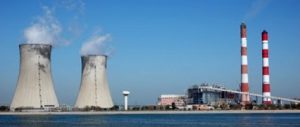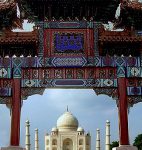Xiao Wang is a toddler, trapped in the body of an octogenarian. His lungs fight for breath, his eyelids droop and his head nods in listless slumber, his blood poisoned by lead and his tiny body weakened by pollution and poverty.
Sitting in the arms of his grandfather in a fly-blown courtyard, up the hill from a lead-emitting manganese smelter in China’s rural Hunan province, little Wang is both a tragic victim of the “dirty development” that has made China great and, if Beijing has its way, a poster child for the promise of a cleaner, greener China.
Xiao Wang’s village of Hengjiang, a settlement of 1,800 mostly elderly people left behind to grow rice or mine alluvial coal, while younger villagers migrate to better jobs in richer cities, has emerged as a test case of Beijing’s resolve to clean up the Chinese mining and minerals industries.
In August, state media publicised anti-lead protests in Hengjiang and in Shaanxi province, a big lead-producing area, prompting the government to shut down enough lead smelters to cause a sharp jump in the world price for the commodity.
Is Beijing just reacting to short-term pressure? Or is China finally getting serious about cleaning up its environment and the health of its 1.3 billion people?
Beijing has repeatedly said it wants heavy industry to consolidate, eliminating smaller producers that create the most pollution and use the most energy.
But what central planners in Beijing want is not always what they get. Provincial and local government officials often have their own agenda: they need tax revenues, growth, jobs (and the odd kickback), all of which may be jeopardised in the short term by greener development.
The manganese smelter at Hengjiang is a case in point. Officials at Wugang, the nearest town, say they did not know the smelter existed. But the inhabitants of Hengjiang could hardly miss the factory, with its heavy black and green smoke that made them feel dizzy and stopped their children from eating.
Village residents staged three protests before they persuaded the Wugang government to shut the plant, which emitted lead as a residue of processing.
Still amateurs at the art of managing public opinion, the local government agreed to test Hengjiang children for lead, including those at a kindergarten within a stone’s throw of the plant. They also decided to pay 150 yuan (US$22) a month compensation for three months to those with the highest levels.
Officials declared the soil and water safe, treated 17 children in hospital and released them. Then they declared the problem solved. They told the Financial Times in September that no children were showing serious signs of industrial lead poisoning, instead blaming the children’s elevated lead levels on petrol residue or even on pencils.
Wugang officials promise that the manganese facility — opened illegally by a top communist party official — will remain closed and that other mining establishments in the area will re-open only after they pass environmental tests.
Hengjiang residents are not satisfied. They say the children remain feverish, listless and without appetite. But officials at the Wugang government and at the hospital in Changsha where the children were treated insist their fevers have nothing to do with lead. “Maybe it’s H1N1 from England,” a Wugang official says, referring to the swine-flu virus.
At a kindergarten, the headmistress dismisses the villagers’ worries as peasant ignorance, saying “they think even the trees and the walls are polluted”. She says her school is losing pupils, and the village has lost residents.
Still, many environmentalists believe Beijing is serious about transforming its growth-at-any-price paradigm into a greener, healthier, more environmentally efficient vision of the future — and even the market appears persuaded.
Macquarie Bank estimates that 200,000 to 300,000 tonnes a year of lead capacity has been taken out of production because of the crisis. Although new lead capacity of three million tonnes will be added annually in the medium term, 80% of it will be significantly cleaner and greener.
But the challenge is huge. Local governments seldom have the funds or the incentives to keep dirty plants closed or monitor greener ones for compliance.
Some metals analysts think dirty smelters will just reopen as soon as the media attention dies down, but others believe this year could prove a turning point.
“Compared with the past, villagers can now get information from the media and they are not that easily cheated,” says Feng Juncong of state-owned Antaike metals consultancy.
But it is still far from clear that this year’s crisis will improve the lives of the Xiao Wangs yet to be born rather than prove to be just another illustration of the dark side of Chinese development.
Additional reporting by Javier Blas in London
www.ft.com/home/uk
Copyright The Financial Times Limited 2009.
Homepage image by kattebelletje



